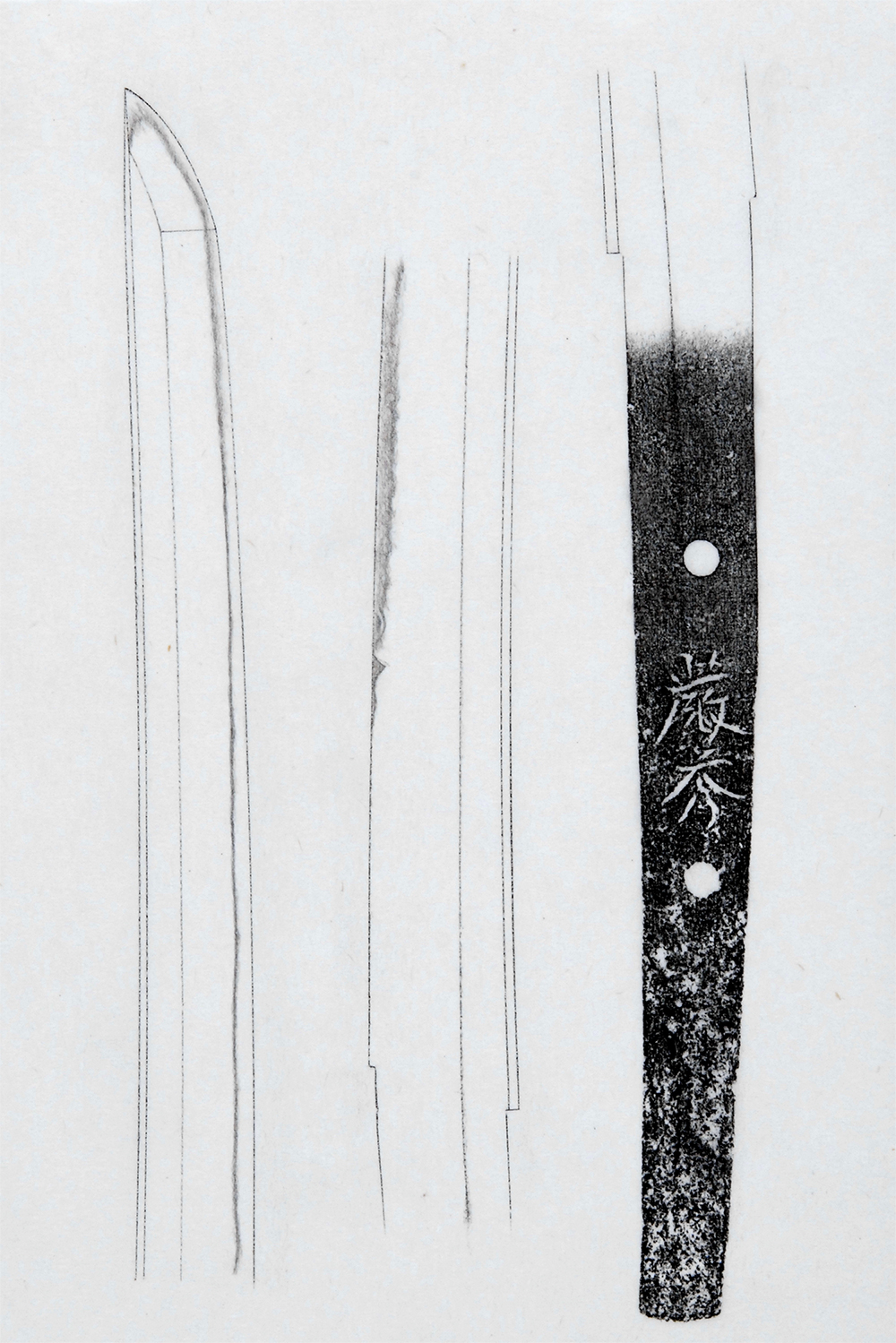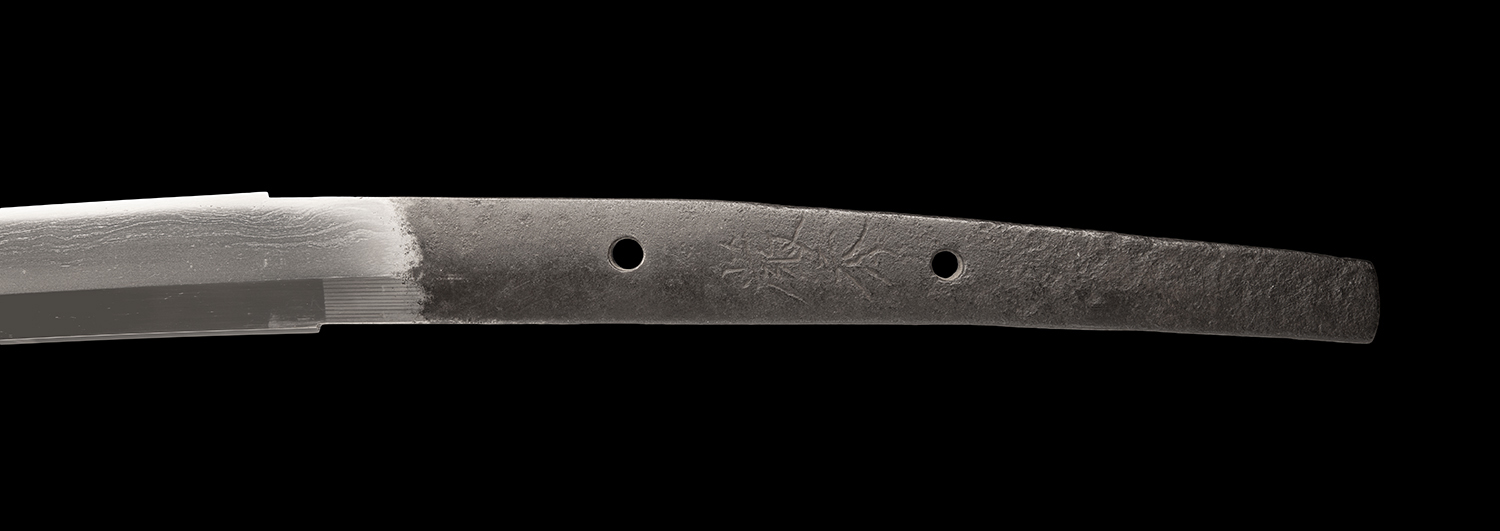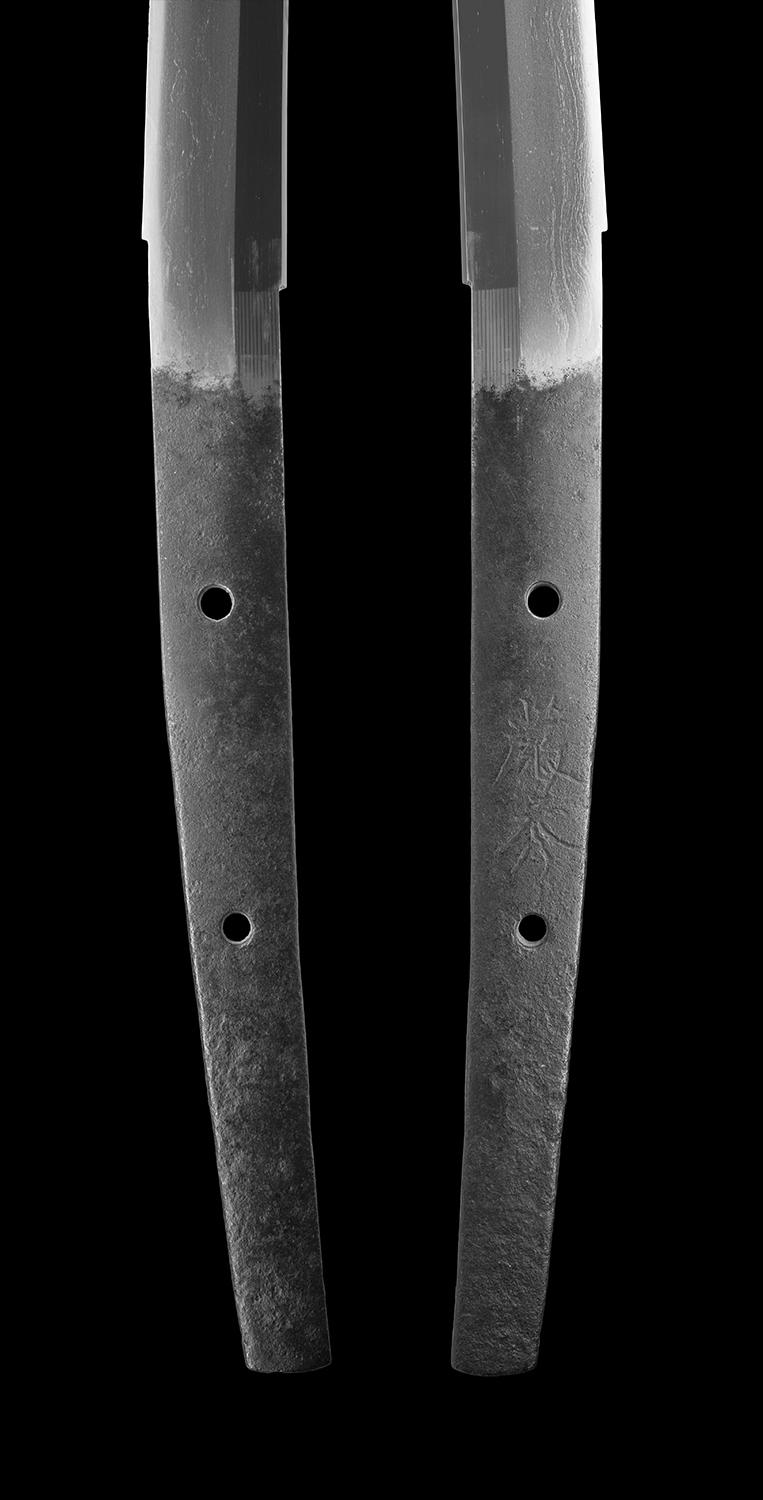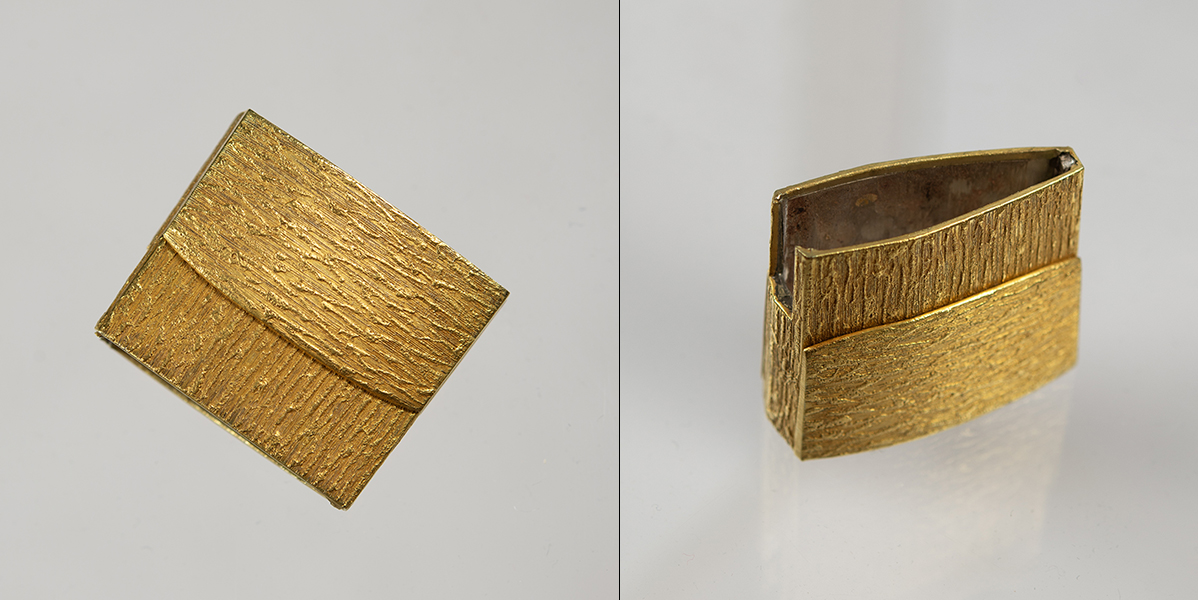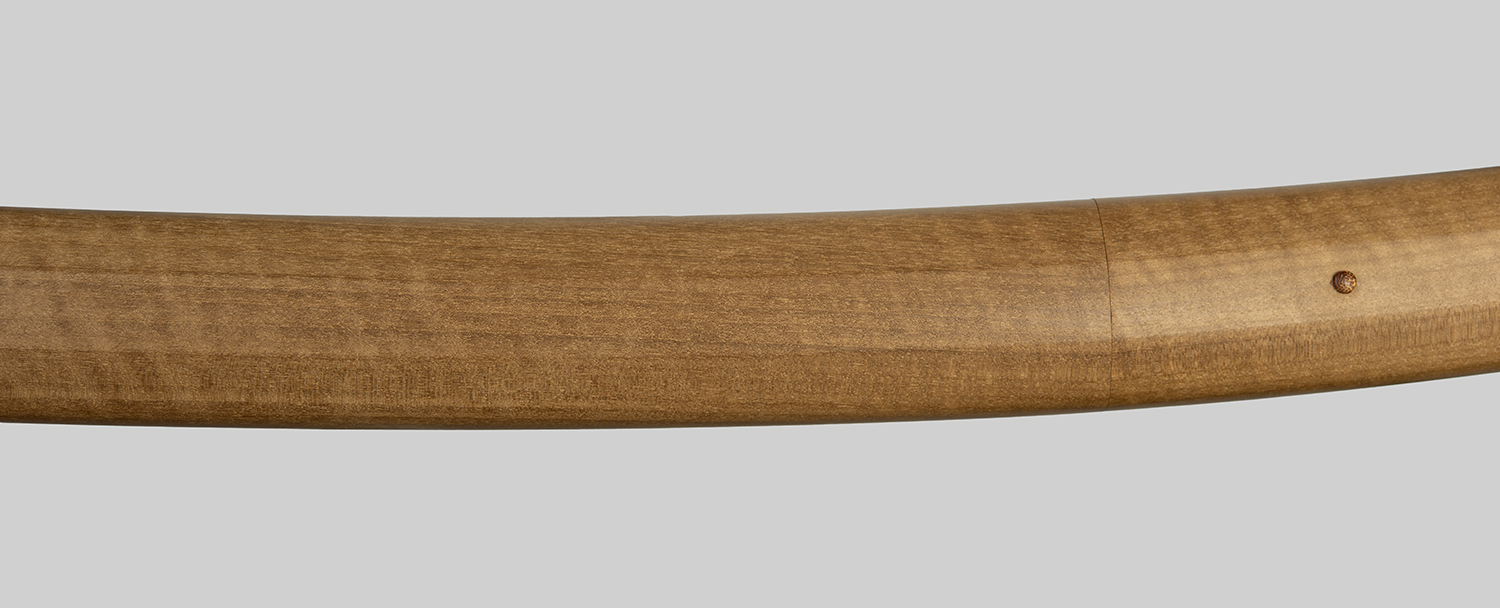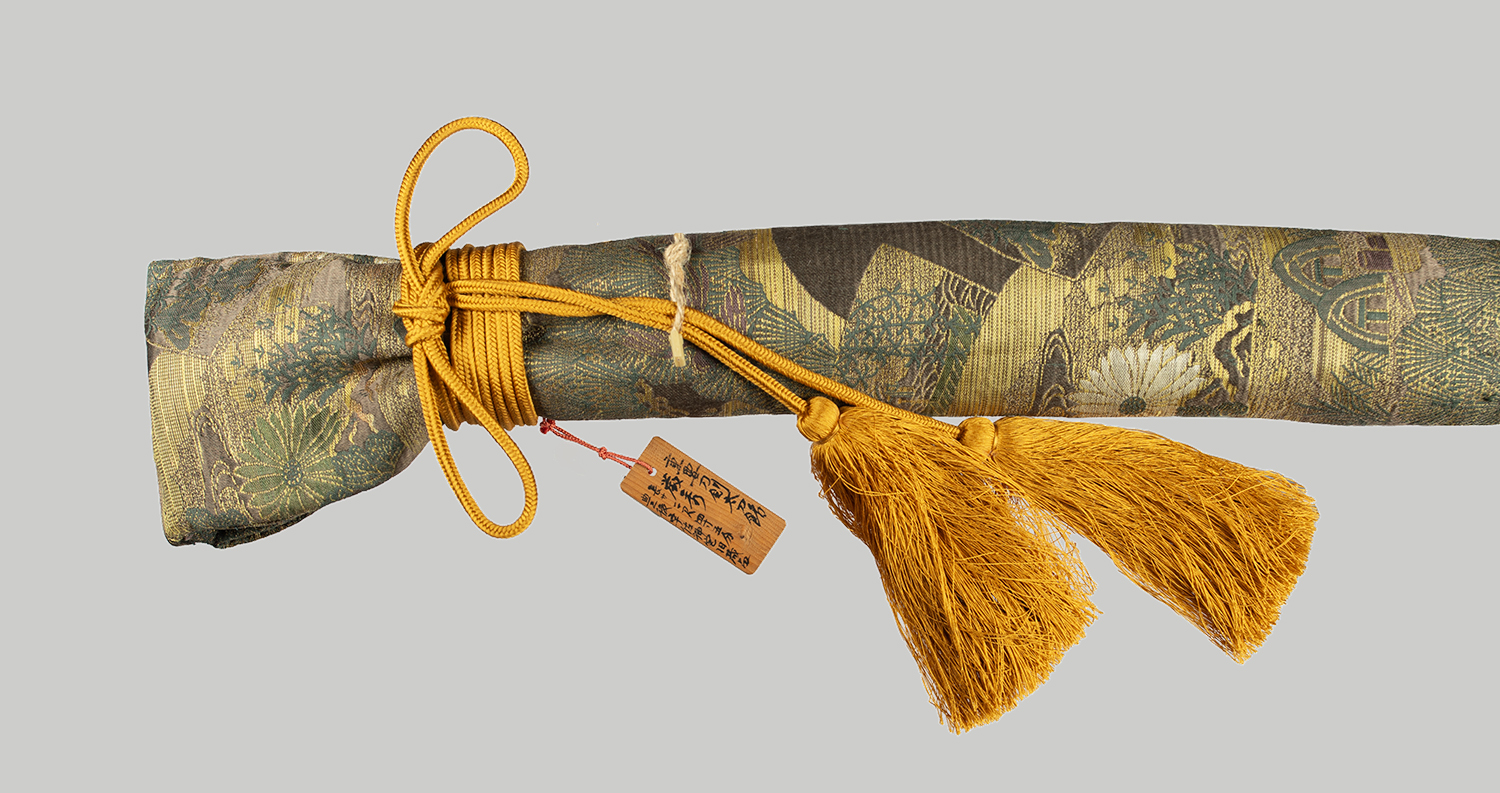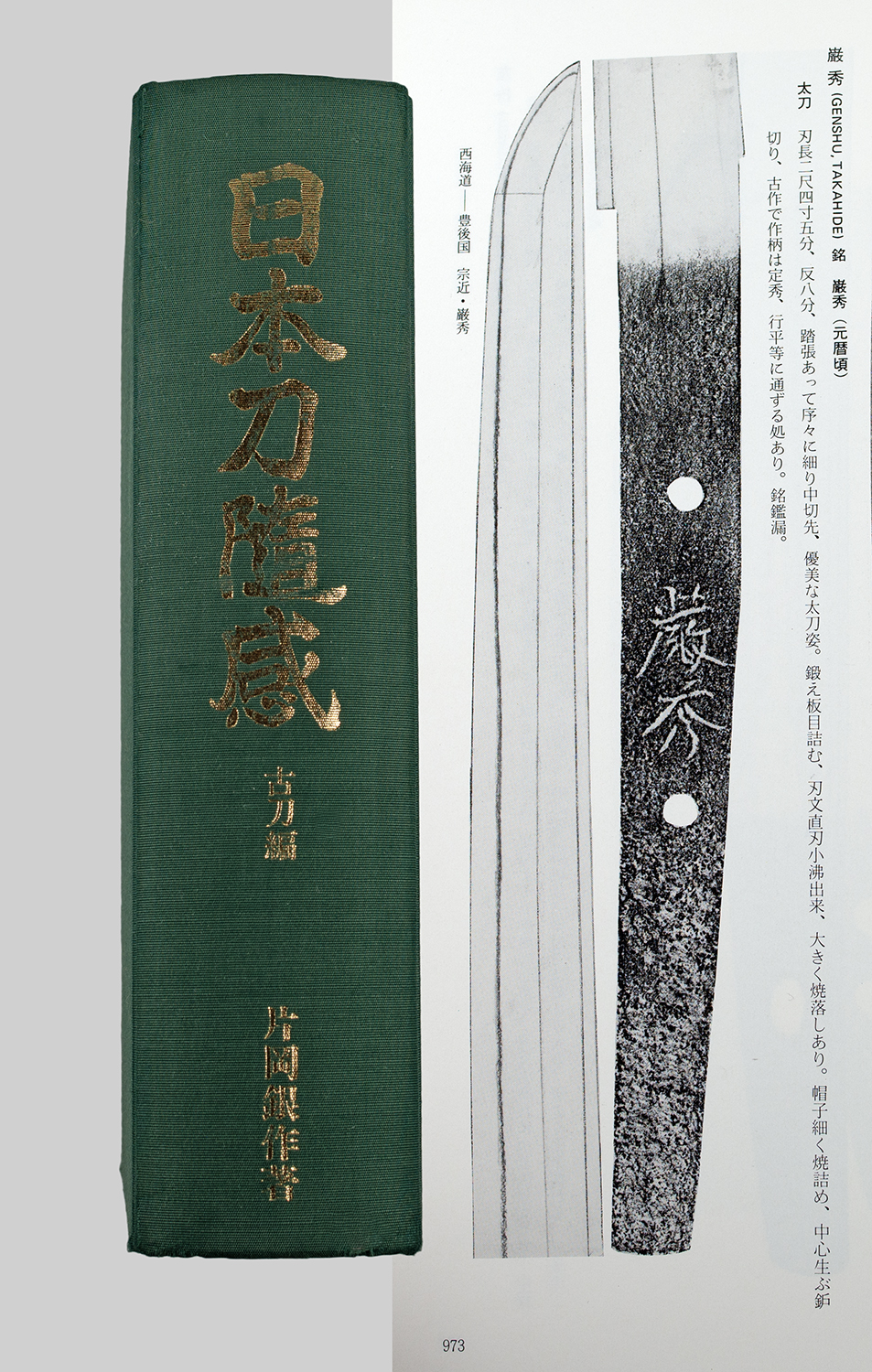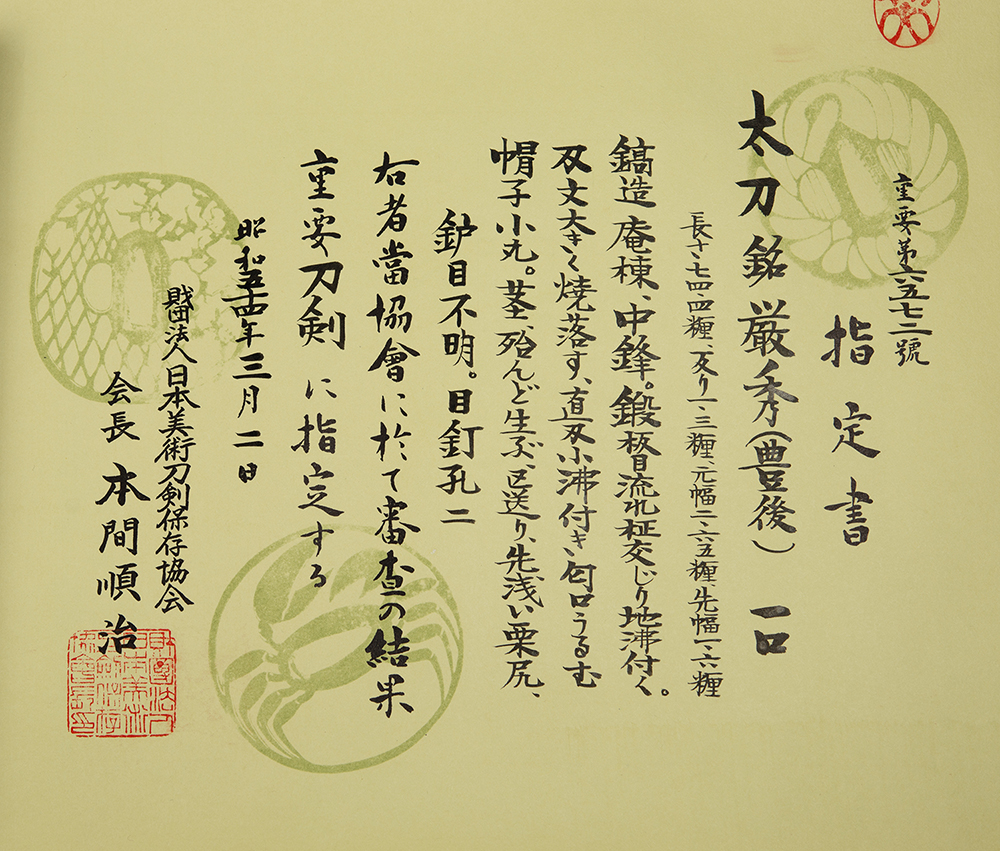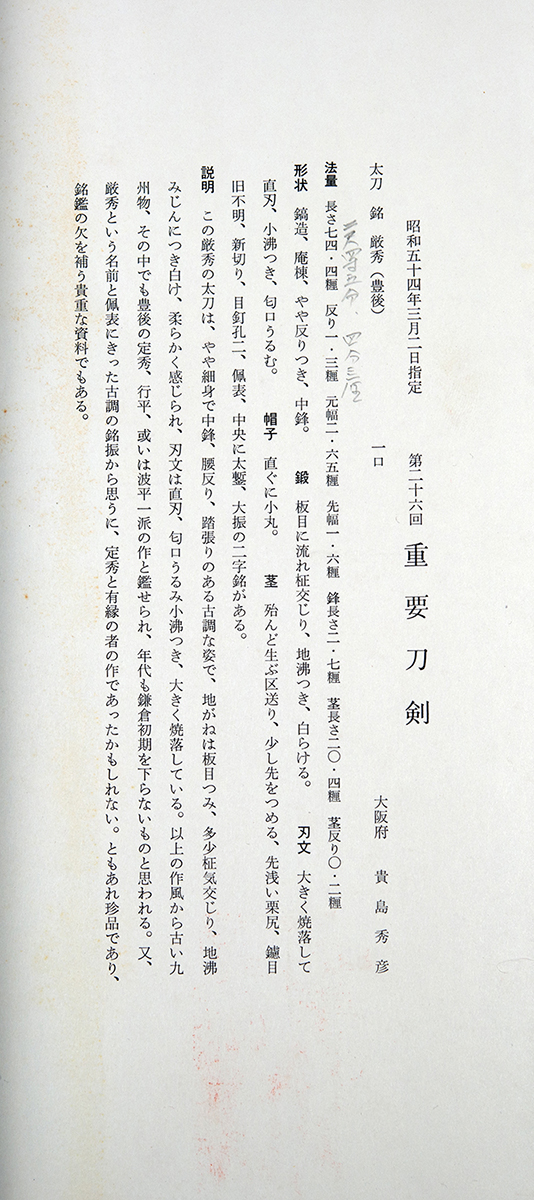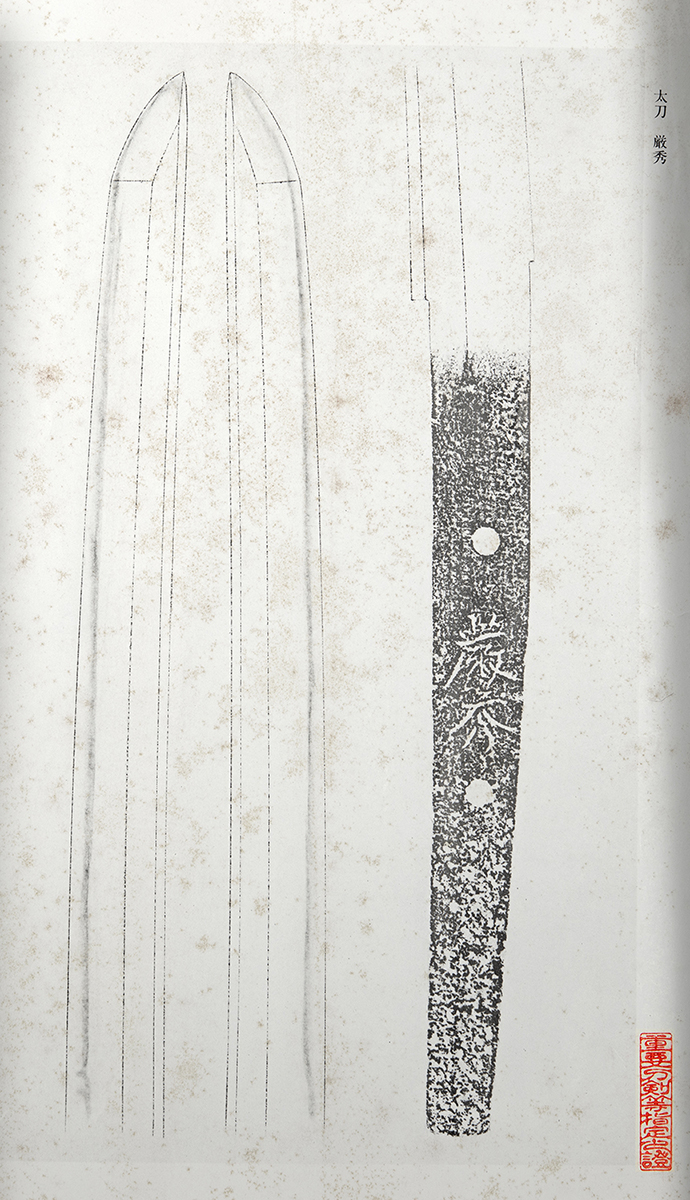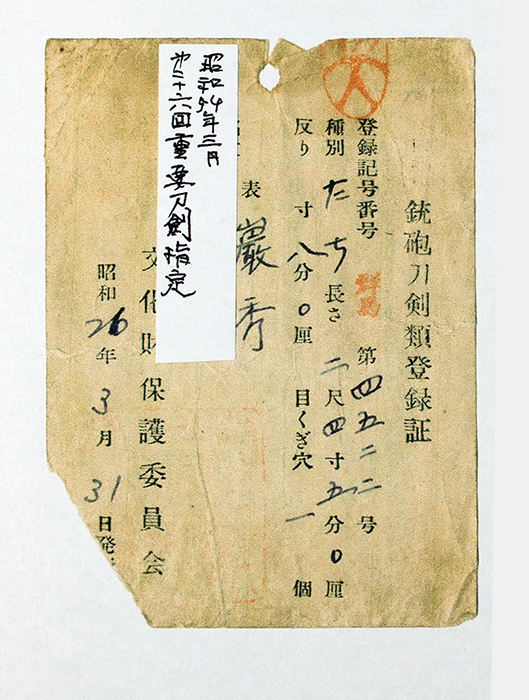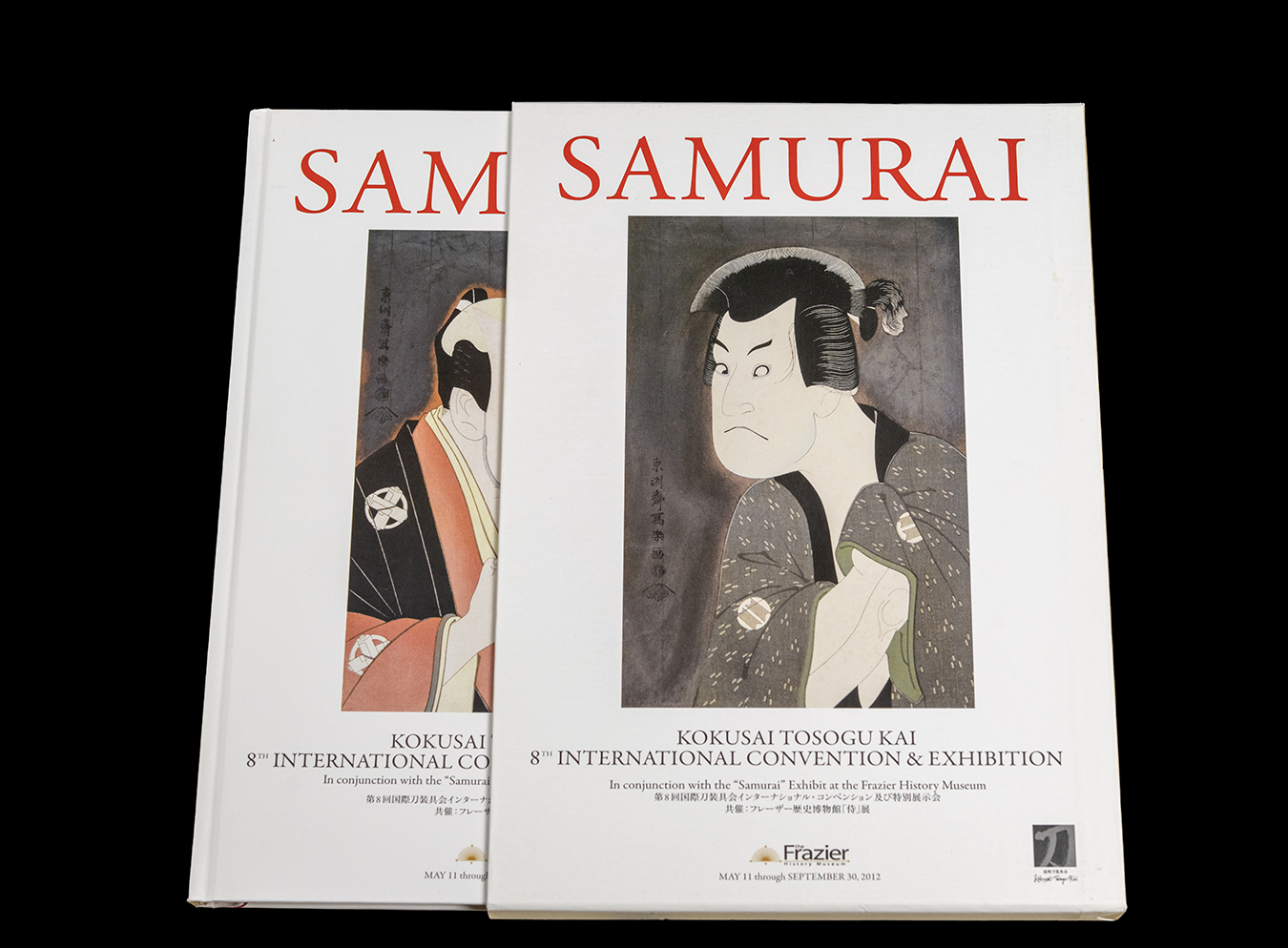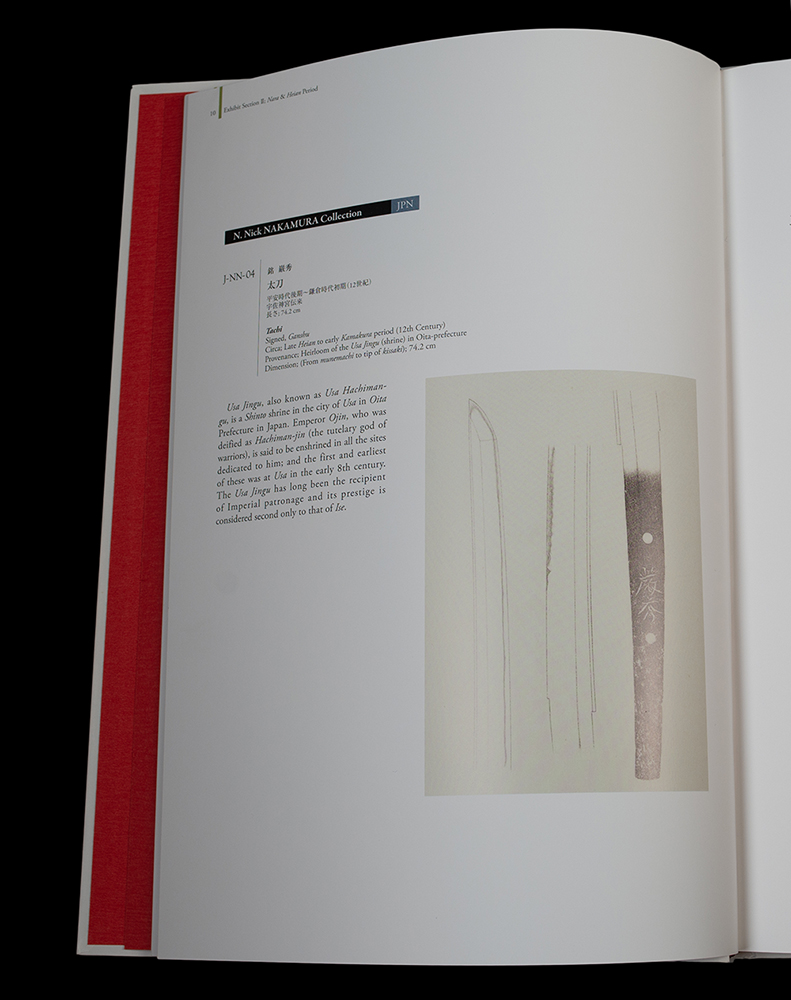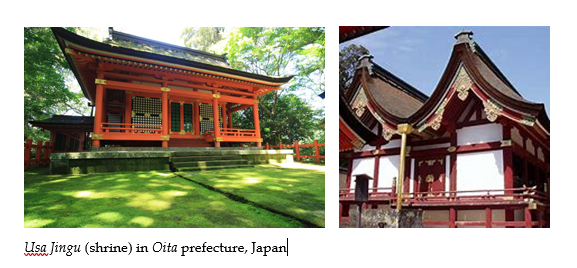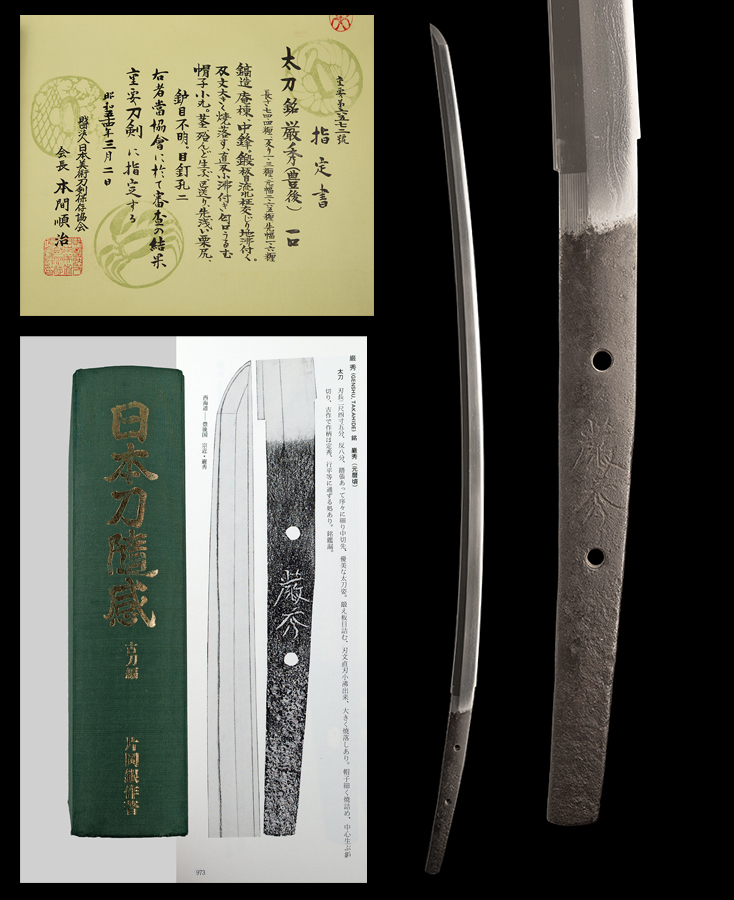|
| |||||||||||||||||||||||||||||||||||||||||||
Hamon : Ko-nie deki suguha with nioi. There are ko-ashi. Yakiotoshi with a soft nioi-guchi becoming a bright, tight nioi-guchi. Ko-nie is also present and there is mizukage from yakiotoshi.
Boshi : Ko-maru with a short return. Nioi is strong throughout the tip of the kaeri.
Kitae : Itame hada mixed with masame. Some areas becauome ayasuji-like. Abundant ji-nie and clear utsuri.
About this sword :
太刀
銘、巌秀
平安時代後期~鎌倉時代初期(12世紀)
宇佐神宮伝来
長さ、74.2 cm
Tachi
Signed, Ganshu
Circa; Late Heian to early Kamakura period (12th Century)
Provenance; Heirloom of the Usa Jingu (shrine) in Oita-prefecture
Nagasa; 74.2 cm
26th Juyo Token NBTHK (1979)
This tachi is an heirloom of the Usa Jinga, where it had previously been kept for centuries. Usa Jingu, also known as Usa Hachiman-gu, is a Shinto shrine in the city of Usa in Oita Prefecture in Japan. Emperor Ojin, who was deified as Hachiman-jin (the tutelary god of warriors), is said to be enshrined in all the sites dedicated to him; and the first and earliest of these was at Usa in the early 8th century. The Usa Jingu has long been the recipient of Imperial patronage and its prestige is considered second only to that of Ise.
The shirasaya for this tachi was crafted by one of the top saya-shi in Japan, Manabu Yokoyama. He used carefully-selected rare quality Ho-wood from his collection for this tachi. Please note the gorgeous medullary rays on the surface of the wood. Manabu Yokoyama was retained by Dr. Walter Ames Compton and made shira-saya for his collection. Also the oshigata shown below is by Manabu Yokoyama, considered one of the leading oshigata artists in the world. The tachi bukuro (bag) was special ordered from renowned kumihimo-shi (braider), Midori Suzuki.
This tachi has one of the earliest (1951) Nihonto registration papers. These are known as Torokusho and were issued by the Japanese government after WWII. According to transmission, early registration was available to Shrines & Temples. These locations were repositories of treasures that were of the upmost importance to Japan.
Published in the Nihonto Zuikan (1977) by Kataoka.
Awarded Juyo status by the NBTHK in 1979 and published in the 26th Juyo Token Nado Zufu.
Exhibited at the Kokusai Tosogu Kai SAMURAI EXHIBITION (2012), Frazier History Museum, Louisville Kentucky, USA


